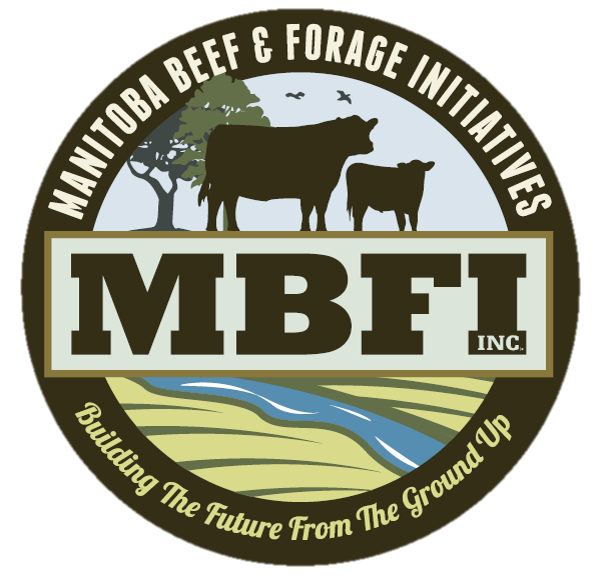Study looks at improving profitability with eco-buffer
By Robert Arnason of the Western Producer
BROOKDALE, Man. — Wetlands found within cropland in Western Canada tend to look the same.
Most are loaded with bulrushes, have a small amount of open water in the middle and the low-lying area at the edge is often infested with green foxtail and other weeds.
A wetland on the Manitoba Beef and Forage Initiative research farm near Brookdale, Man., has all of those standard features, but it also has something unique.
Five rows of newly planted shrubs and trees poked out of the earth on the northeast side of the wetland in a 15-metre-wide strip of land between it and a corn crop.
The small trees and shrubs will eventually grow into an eco-buffer between the cropland and the wetland, said Kim Wolfe, a Manitoba Agriculture research development specialist.
“It (an eco-buffer) is basically a traditional shelter belt on steroids. It’s a really dense, mixed planting arrangement of native trees and shrubs,” Wolfe said at a late July field tour held at the research farm.
“It’s going to (provide) all the same ecological goods and services of a traditional shelter belt, just enhanced because of the dense nature of the planting.”
The beef and forage initiative is a partnership between Manitoba Beef Producers, Ducks Unlimited Canada, Manitoba Agriculture and the Manitoba Forage and Grassland Association.
Its mission is to conduct research on ecosystems and improving producer profitability.
Wolfe’s eco-buffer project is one of many research efforts at the farm, which was founded last year.
Wolfe said the eco-buffer between the crop and the wetland should provide environmental benefits once it is mature.
“It’s going to do all those things a traditional shelter belt will do: filter nutrients, trap sediment, sequester carbon, provide wildlife habitat and pollinator benefits,” he said.
The Assiniboine River Conservation District in Manitoba is also experimenting with eco-buffers, but Wolfe wasn’t sure if any Manitoba farmers have adopted the practice.
In 2012, The Western Producer reported on Don Ruzicka, an organic grower from Killam, Alta., who was building eco-buffers on his farm.
Gary Bank, an agro-forestry researcher with the former Prairie Farm Rehabilitation Administration, helped Ruzicka with his project.
“If you’re in a system where you’re farming wall to wall, then the bush gets in the way,” Bank said at the time.
“But another way of looking at agriculture is, we need these natural areas to help the agriculture proceed and survive, that it will take benefit (from) these natural ecosystems services.”
It could be challenging to measure the benefits of an eco-buffer next to a wetland, but the bushy, treed area would likely provide habitat for pollinators, which might amplify crop yield.
Wolfe said the soil and growing conditions adjacent to wetlands are usually poor, so farmers shouldn’t lose productive cropland by converting the area into a small eco-buffer.
“If you look over there at that corn, it’s not doing so well,” she said, pointing to short, lime green corn stalks.
“If you put this type of eco-buffer (in), you’re going to get a bunch of ecological goods and services, versus a poor producing crop.”
The Manitoba government plans to implement an Alternative Land Use Services program, or a similar initiative, in which landowners are compensated for practices that preserve water quality, protect habitat or prevent flooding.
It’s much too early to know if eco-buffers will become part of an ALUS program. Regardless, Wolfe said landowners and policy makers should think about the areas around wetlands, not just the bulrushes and the water.
